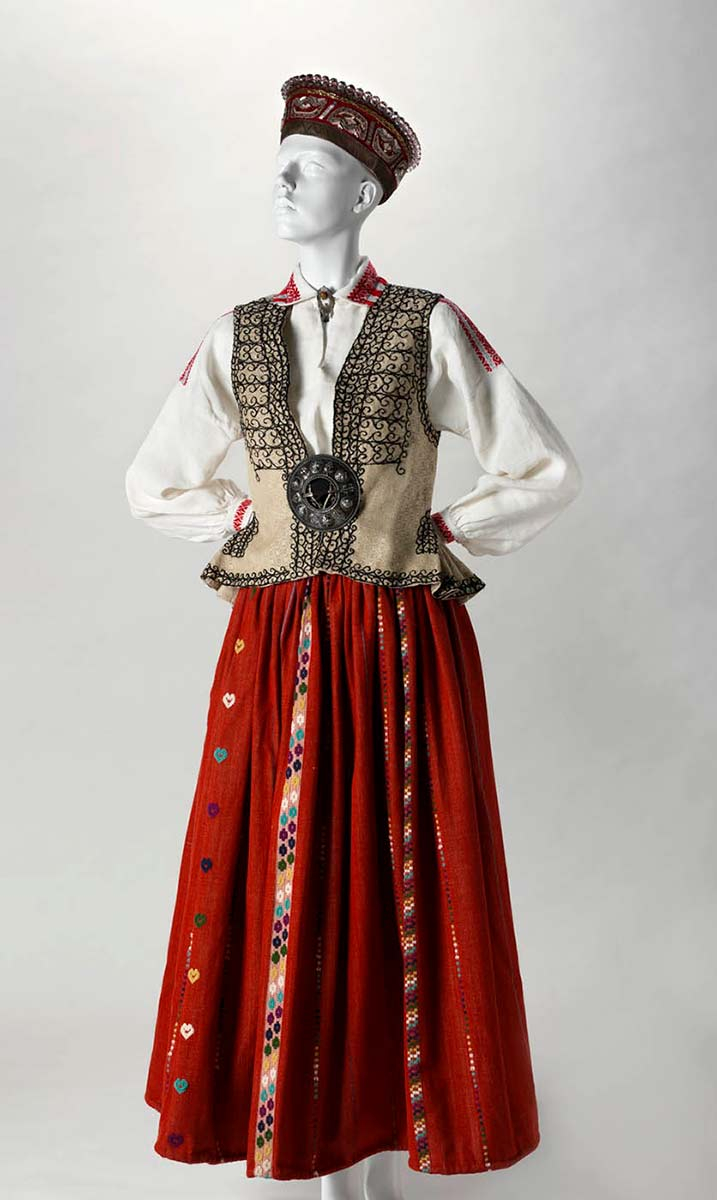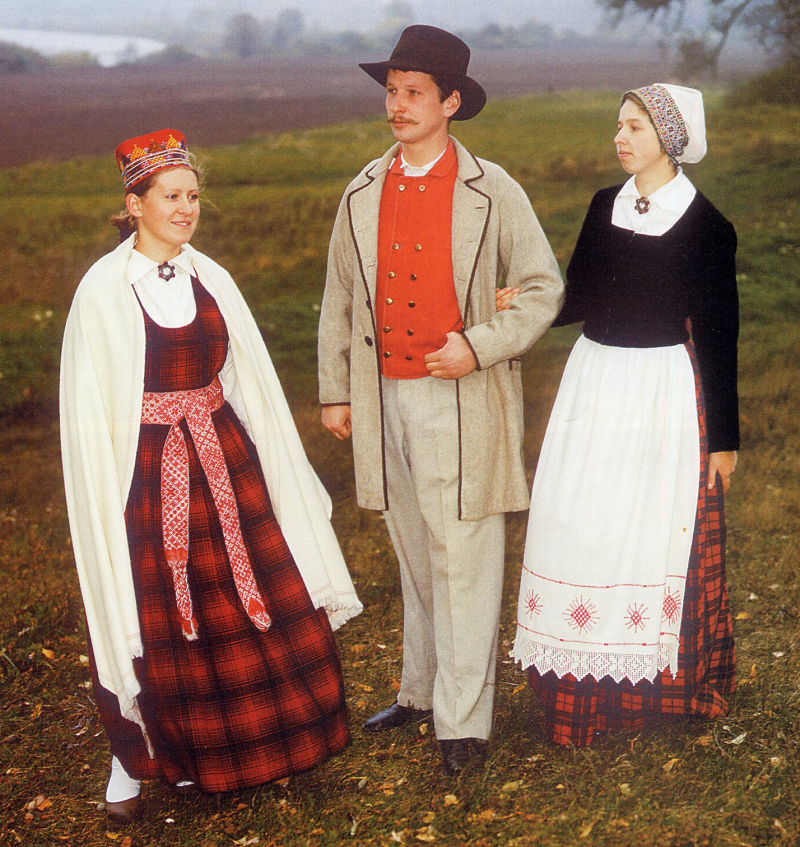National Dress
Based on the historical era in which they emerged, Latvian national costumes can be divided into two categories: the "ancient clothing" period, which spans the 7th to the 13th century, and the "ethnic" or "ethnographic dress" period, which spans the 18th and 19th centuries. The traditional Latvian belt, a broad sash with a woven geometric pattern, is a defining element of Latvian women's folk attire. In Latvia, each region has its own distinctive patterns and hues.
The most well-known is the Lielvrde sash, or josta, a large, intricately patterned red and white woven sash. The belt was useful because it kept clothes together and could be used to attach objects like keys or a dagger in an era before clothing had pockets. Some academics think that the signs and graphic symbols on the sashes, which resemble old pictographs from Asia, represent ancient coded information. The Lielvrde sash is so recognizable that it can be seen on the passports of the country. National costumes are most frequently worn in modern times at the Song and Dance Festivals, which are held in Riga every four years, and on Midsummer Night, a well-liked national festival observed on June 23 in Latvia.







